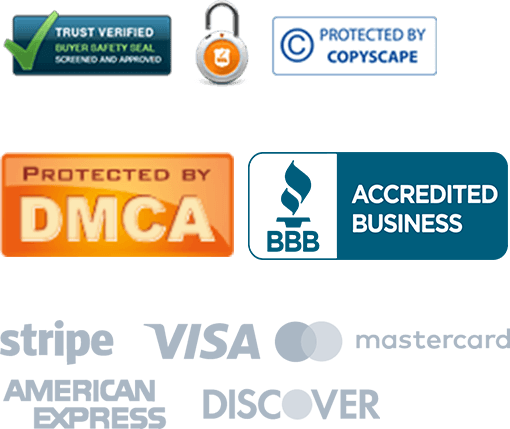It’s time to support your newly published book, but how in the world will you do it? This problem frequently arises for most authors. You won’t be getting a call from a morning show until you have already established a public profile.
Similarly, influential media houses are also unaware of your presence. But don’t let that stop you. All authors are unknown before they establish their reputations. And you can carry that out too.

So, for the time being, forget about going to book tours. So let’s go straight into the 21st century and use the power of technology to discover your actual audience and encourage more book sales rather than depending on outdated methods of advertising your book and brand.
But how are we going to do that? With content marketing!
How Do You Define Content Marketing?
Content marketing is a digital marketing technique that involves producing and sharing helpful content online. Its primary goal is to draw your target audience to read about your book or your brand. This method is usually referred to as inbound marketing. In contrast, outbound marketing involves communicating with your target audience. Finally, you look them up on the internet through promotional campaigns.
Even when you have done background research to draw readers in, effective inbound marketing will make readers feel as though they have just found a new book. However, outbound marketing seems more troublemaking to audiences because you interrupt them with advertisements during their browsing experience.
Although both outbound and inbound marketing are effective, one is unquestionably more expensive than the other. When conducting outbound marketing, a campaign must be funded adequately. However, with inbound marketing, you can obtain fantastic outcomes for a lot cheaper. And even higher results can be achieved by combining inbound marketing with outbound marketing, such as running an advertising campaign to highlight a particular blog post. However, you don’t need to worry about blending these two modes of marketing. Instead, you just need to focus on establishing a core foundation, which is producing quality content.
Content Marketing Disclaimer
Content marketing calls for a particular set of creative abilities from authors. You are not necessarily good at producing content just because you are a writer. Content marketing is primarily a promotional strategy. And for those of us who create imaginary people and create entire civilizations from scrap, that kind of writing can be difficult.
Your website, blogs, social media posts, and newsletter content will adopt a new perspective. Your content will undoubtedly be salesy, but that doesn’t imply it’s soulless. Additionally, it does not imply using buy-now or high-pressure techniques. Instead, you should concentrate on book promotion.
Along the process, you will establish a relationship with your target market, nourish your brand, and develop a community of people who are interested in you and what you do. After all, content marketing isn’t difficult if you develop a solid plan.
Developing A Content Marketing Strategy
Here are some tips for developing a successful content marketing plan:
Set Your Content Marketing Goals
Setting a goal for your content is the first step on the road to global dominance. You need to decide:
- What do you want to achieve?
- Would you wish to create excitement for your new book?
- Would you like to make a list of active fans’ email addresses?
- Would you desire to position yourself as a subject matter authority or thought leader?
As you can see, there are a variety of goals you can pursue with your content in addition to merely increasing book sales. So, establishing those goals will help create the appropriate content. Pick goals that are Time-based, Specific, Actionable, Realistic, and Measurable. So, if you want to develop a fan base, you must specify how you plan to do it.
Try this for each of your content marketing goals. Your content marketing goals will become more actionable by being broken down in this way. It turns into something you can complete and monitor. For example, how will you know whether you are on the right road if you don’t monitor your content marketing goals? So, do not omit this phase. It’s essential to your content marketing strategy’s long-term success.
Decide Who You Want to Reach
Determine the audience for your content right now. Creating content for the exact audience you want to buy and read your book is relatively simple. The subsequent step is more difficult, though. Even while you could believe that your book is for everyone on the planet, the fact is that only a small percentage of people will be drawn to it. Your chosen genre won’t appeal to everyone, and that’s fine. It isn’t personal. Therefore, concentrate on the audience that will buy your books rather than attempting to appeal to everyone.
Other groups that can connect to you in terms of gender, race, philosophy, age, etc., may also find you appealing. When developing content, don’t be hesitant to include such clusters as well.
Content Production
Blogging, promotional videos, podcasts, email newsletters, and social media postings are a few alternatives when it comes to producing content for your content marketing campaign. So, let’s discuss the three most common types of content you can simply produce, along with how to do it.
Blogging
When it comes to online content, blogging is probably the first thing that springs to mind. And there’s a solid reason for it: Blogging works well for drawing in readers. But not all blog subjects are created equal. So, it’s unlikely that writing a blog about your daily activities would draw readers.
A blog post on the books you read will get the audience’s attention. You not only write in a particular genre, but you also genuinely enjoy that genre. Create content based on the books you enjoy most from that category. Readers who are also interested in a similar genre can read your contributions. Promote your own work at the conclusion of your review. This practice of bringing attention to other writers is referred to as literary citizenship.
In addition to reviews, you can also conduct authors’ interviews. For example, you will receive traffic from the author’s followers if they already have a large following, which might increase your visibility.
Here is a simple checklist you can follow for blogs:
- Develop a website to publish your blogs.
- Create a list of topics that could most entice your target audience.
- Schedule when you will write and then publish each piece on your content calendar. Multiple posts can be written at once and can be scheduled for automatic posting at a specific time.
Social Media
Social media platforms are a great opportunity for publishing content. Social media is widely used, and an estimated 3 billion people use Facebook.
Additionally, TikTok, one of the most recent additions to the social media scene, has staggering 1 billion users. At least a portion of those billions of people belongs to your target market. You should be on social media for this reason. Social media is for more than just sharing updates. Consider it a location where you can interact with fans and people who share your interests. Social media conversations are definitely dialogues, whereas writing tends to be more of a monologue. These platforms allow you to initiate conversations or join one that is currently underway.
Social media engagement can be done in a variety of ways. Regular posting and replying to all comments are essential for creating a vibrant online community. Keep the following in mind when you create your social media presence:
- Start on one platform, and once you have established yourself there, you can go on to others.
- Because Facebook is the most widely used social networking platform worldwide, think about starting there first.
- Use your phone to make videos on Facebook or YouTube; don’t let a lack of professional tools prevent you from making films.
- Create content in advance and schedule it to publish automatically regularly.
Newsletters
Create an email newsletter as a last but not least step. People can save your blog but fail to revisit it. People might follow you on social platforms but never see your postings because of tricky algorithms prioritizing sponsored content over organic content. On the other hand, when a reader subscribes to your email list, you have access to them right away through their inbox.
Any content marketing plan should include email, allowing you to be at the forefront of your readers’ minds. They will remember you and return to your content, whether it is on your blog or on social media. Moreover, offering a free gift is the simplest approach to get people to sign up for your email list. It is referred to as a lead magnet. Free chapters or a reading list with your favorite books are examples of common lead magnets.
This free present will encourage people to sign up, putting them on your email list. From there, you can keep establishing a rapport with them in order for them to eventually be among the first to purchase your next book when it is out.
The most effective mailings are succinct and to the point. They have no more than 150 words. The goal is to persuade the reader to click a link in your email so they can read more of your information outside their inbox rather than remain in their inbox. For this reason, you ought to send out an email each time you publish a new blog entry.
Complete the following steps to start up your email newsletter:
- Select the email newsletter software you want to use.
- Make your automated welcome email.
- Choose the kind of content you will produce for your newsletters.
The examples are shown above only scratch the surface of content marketing.
Build Up Your Content
Layers of content make up content marketing. For example, your foundation layer can be compared to a blog. Then, instead of beginning from scratch, you can build on that layer to produce different forms of content.
So, what does that mean?
You can make a promotional video to support your blog once you have written it. The video can either restate what you said in the post or go into further detail on a subtopic.
The same is true for podcasts. You can actually capture the audio of your blog post and convert it to a video, or you can just take the audio file from your YouTube video. Alternatively, you can diverge from your original topic with your podcast and talk about a point you made in your article.
Book reviews, author interviews, narrations of short stories, and insights into your writing process are a few more popular podcasting themes.
Final Thoughts
So, building awareness for your book and business is easy with content marketing. Don’t pass up the opportunity to start a blog or engage in social media. This is an effective strategy for attracting new readers and increasing book sales.





